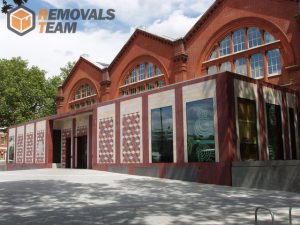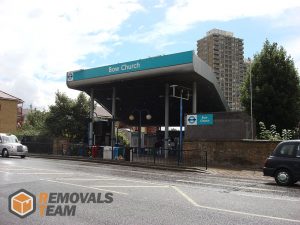Located in the central parts of London, the Borough of Tower Hamlets covers an area of 7.63 square miles and is one of the smallest in the English capital. It has an estimate population of 295.000 people which makes it one of the most populous areas in the United Kingdom. The borough has a density rate of 39.000 people per square mile. Tower Hamlets is comprised of numerous districts, some of which are home to some of London’s most popular landmarks, entertainment venues, parklands and monuments.
Limehouse, E14, is an area which lies in the central parts of the borough and according to the latest census has a population of about 16.000. The district is home to several prominent edifices such as St. Anne’s Limehouse which is arguably the area’s most famous church. It dates back to the 18th century and was designed by renowned English architect, Nicholas Hawksmoor. The church is listed as a Grade I building and lies in close proximity to the district’s town hall and library, both of which are recognised as Grade II structures. Limehouse is linked to the other parts of the capital by its own station which was established in 1840 and provides transportation services to over 11 million people on a yearly basis.
 The district of Bethnal Green, E2, has a population of approximately 28.000 people and lies at about three miles from the junction of Charing Cross. The area is home to a number of prominent primary and secondary educational facilities. The Raine’s Foundation School is the oldest in the district. It was founded in 1719 and is classified as a Church of England voluntary aided school. Presently it provides top quality education to a total of 815 boys and girls between the ages of 11 and 18. The V&A Museum of Childhood is beyond any doubt the district’s most famous landmark. It was founded in 1872 and is a branch of the internationally known Victoria and Albert Museum. As the name suggests, the venue is dedicated to child related items. It is housed in a Grade II edifice and is among London’s most visited museums. People can easily relocate to the area by using professional and affordable man and van services in Bethnal Green.
The district of Bethnal Green, E2, has a population of approximately 28.000 people and lies at about three miles from the junction of Charing Cross. The area is home to a number of prominent primary and secondary educational facilities. The Raine’s Foundation School is the oldest in the district. It was founded in 1719 and is classified as a Church of England voluntary aided school. Presently it provides top quality education to a total of 815 boys and girls between the ages of 11 and 18. The V&A Museum of Childhood is beyond any doubt the district’s most famous landmark. It was founded in 1872 and is a branch of the internationally known Victoria and Albert Museum. As the name suggests, the venue is dedicated to child related items. It is housed in a Grade II edifice and is among London’s most visited museums. People can easily relocate to the area by using professional and affordable man and van services in Bethnal Green.
Leamouth is an area which is situated in the easternmost parts of Tower Hamlets. It is one of the borough’s least popular residential districts and is the location of Container City 2 which is an area made of shipping containers which have been converted into household units in order to accommodate local workers. The district is the subject of a major regeneration project which is why more and more people are choosing to move to it. You can easily relocate to the area by using reliable removal services in Leamouth, E14. This way you will have the peace of mind that all your belongings are being packed, loaded and transported by professional, attentive and seasoned man and van contractors.
 The area of Bow, E9, is located in the northernmost parts of the Borough of Tower Hamlets at about five miles from the intersection of Charing Cross. It has a population of over 27.000 residents. Bow Church is certainly the most prominent landmark in the district. It is one of the oldest churches in the borough as some parts of its date back to the early 14th century while the bell tower was built during the 15th century. Its top has to be reconstructed after World War II as it was damaged during the German bombings. The area is served by its own tube station which was opened in 1902 and presently sits on the Hammersmith and City, and District lines from the London Underground. The station is listed as a Grade II building.
The area of Bow, E9, is located in the northernmost parts of the Borough of Tower Hamlets at about five miles from the intersection of Charing Cross. It has a population of over 27.000 residents. Bow Church is certainly the most prominent landmark in the district. It is one of the oldest churches in the borough as some parts of its date back to the early 14th century while the bell tower was built during the 15th century. Its top has to be reconstructed after World War II as it was damaged during the German bombings. The area is served by its own tube station which was opened in 1902 and presently sits on the Hammersmith and City, and District lines from the London Underground. The station is listed as a Grade II building.
Cubitt Town is a district which is situated on the Isle of Dogs. The area is named after William Cubitt who was Lord Mayor of London from 1860 to 1862. It was he who developed the district and created the local amenities. The area is the location to several well-known estates such as:
- Millennium Wharf
- New Union Wharf Estate
- Amsterdam Road
- John’s Estate
- Samuda Estate
Cubitt Town, E14, is home to two primary schools (St. Luke’s School and Cubitt Town School) and one secondary educational facility, George Green’s School which dates back to the 19th century.
